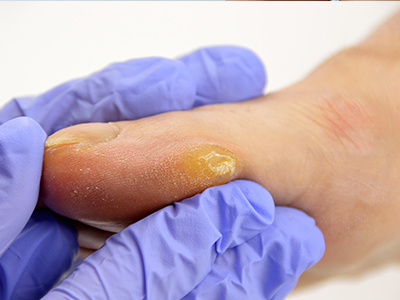A callus is a toughened area of skin which has become thick and hard due to repeated friction or other irritation. These occur as the body’s method of protecting itself from the repeated stress that the part of the body where the callus forms are subjected to. For example, those who play stringed instruments tend to develop calluses on their fingers. Calluses are mostly harmless in and of themselves are even considered helpful by some.
Corns, on the other hand, are less desirable. Corns are a specially shaped callus that tends to form on the hairless and smooth skin surfaces of the body, i.e. parts of the toes or fingers. Corns occur when a constant pressure or rubbing irritates the affected areas in an elliptical or semi-elliptical way. These over time have more of a tendency to become painful and even cause skin ulceration. Treatment of both corns and calluses can be carried out by filing the dead skin down with a pumice stone or a callus shaver or in some cases by a podiatrist.
Those with diabetes must be more mindful of callus and corn formation on their skin due to the buildup of dead skin making it harder for the body to supply proper nutrients to the skin. The stiffness of the callus or corn on the foot combined with the pressure that causes it has a possibility of tearing capillaries or adjoining tissue around the callus which then can cause bleeding which then opens the body up to the chance of infection, which could then lead to amputation of the affected limb.
Warts are caused by a variant of the human papillomavirus which can be picked up from any number of sources though generally enter the body through an area of broken skin. Warts appear in many types and can be treated through a surgical procedure, a procedure involving applying a topical acid solution, or even freezing the area of skin using liquid nitrogen or some other source. The disadvantage to any of these procedures, of course, lies in the fact that eventually, the wart could reappear.


